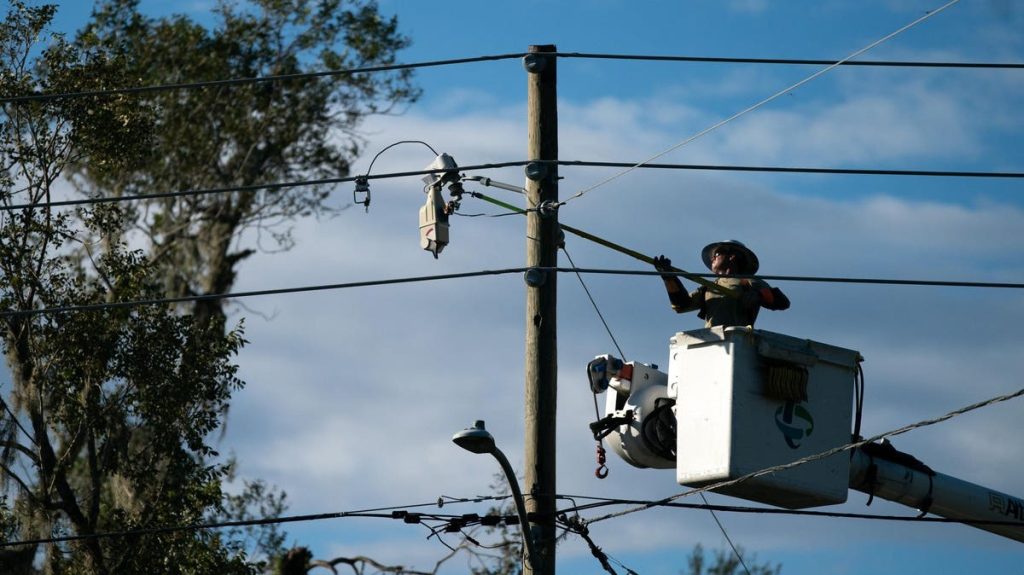Twelve hours after Hurricane Idalia made landfall on August 30 as a Category 3 storm, nearly 470,000 homes and businesses across Florida and Georgia were without power. With events like Idalia becoming more frequent and extreme, utility companies are looking for new ways to adjust to the volatility. Growing recovery costs and increased competition for resources and mutual assistance can create real business and operational challenges. Many utilities are adopting sophisticated tools and technologies to help accurately predict outages and inform efficient response times that keep people safe and return operations to normal as quickly as possible.
Outages due to extreme weather have increased in the past decade by 64%. compared with the previous decade, according to a Climate Central analysis. This has prompted utilities to seek new solutions or backup options to mitigate the potential risks from the impact of hurricanes. Some utilities are using more microgrids, which are self-sustaining systems that bring power generation to massively impacted areas faster than traditional restoration. Many utilities are committing to making grid resiliency investments to better cope with high winds and flooding, including undergrounding lines, using stronger materials for poles and towers, or installing insulation that can withstand water intrusion.
Utilities are also turning to technology and advancements in machine learning and weather modeling to get quite accurate outage predictions up to a week in advance of a storm. The models use historical weather data, along with other data streams, such as population, location, and age of utility assets, and real-time forecasts to predict potential for outages in precise locations.
So, if you can’t control the weather disruptions to the grid, what is the benefit of knowing potential impact on the grid? Advanced knowledge allows for planning for the magnitude of the outages expected and right-size the manpower and resources needed, including external contractors and crews. The utility can also pre-stage on-site and activate the supply chain to accelerate restoration. Ultimately, this can lead to shorter outage duration. This means less downtime for heating or air conditioning, a reduced chance for food and medicine spoilage, a faster return to business operations and services, and protection for those whose electrically powered relies on a steady stream of power.
While we don’t know just yet how accurate outage predictions have been for Hurricane Idalia, we can look at last year’s Hurricane Ian as an example that the technology can be insightful. Two days prior to Ian making landfall, outage prediction insights anticipated nearly 4.6 million customers would experience outages during a week-long window when the storm was expected to be over land. That early prediction was within 7% of the actual outage count of 4.29 million customers. With the hurricane’s changing intensity and track, the technology was able to model real-time storm information with updated outage predictions every six hours, refining the prediction to be within 3% of the actual outages.
Hurricane Idalia, while not as strong as Ian, was still the second major hurricane of the 2023 Atlantic hurricane season and made landfall with sustained winds of 125mph in the Big Bend coastal areas of Florida. During the 24 hours after landfall, Florida Power & Light efficiently addressed restoration and had already completed restoration to 190,000 customers in Southwest Florida and avoided nearly 50,000 outages due to smart grid technology.
While most attention around storm-related power outages focuses on the short-term impact of getting customers back online quickly, these events also have immediate and long-term effects on the utilities. In addition to the costs of restoration crews and lost power for customers, utilities may face regulatory fines, especially if the outage lasts several days.
Long-term tropical storm outlooks are valuable for having a greater understanding of environmental conditions that have the potential to create or suppress tropical storm activity. But, as we have seen with Hurricane Idalia, the right weather conditions can trigger a fast-moving weather event. Using the advancements in meteorology and data science, utilities can better prepare and potentially reduce outages for when weather quickly evolves into a high-impact event.
Read the full article here










